Fort Cornwallis – the Star on the North East Coast of Penang
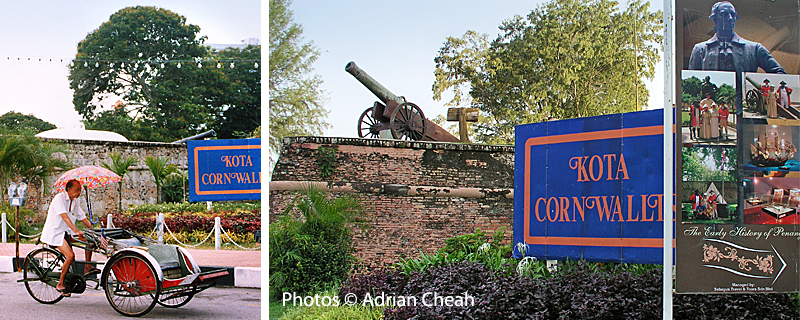
The star-shaped Fort Cornwallis marks the point where Francis Light and crew landed on 11 August 1786 to "take possession" of the island from the Sultan of Kedah. This date was also the birth date of Prince Charles and hence Francis Light named Pulau Pinang as the Prince of Wales Island.
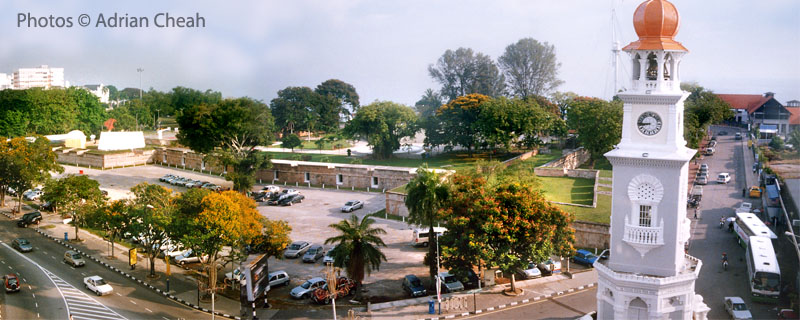
It is here on the North East Coast of Penang Island that he erected a fort of nibong (palm trunk) stockade with no permanent structures, covering an area of 417.6 sq. ft. The nibong stockade might not have provided the best protection against possible attacks but it was adequate to display the presence of British influence on the island in the late 18th century.
During Colonel R.T. Farquhar’s term as Governor of Penang in 1804, the fort was rebuilt with bricks and stones by convict labour despatched from India. When Penang was elevated to a Presidency in 1805, there were plans to rebuild a fort further inland, but that would have meant demolishing the existing fort and half the commercial town! Various plans for a new fort were deemed too costly, and so the existing one was later completed in 1810 during Norman Macalister’s term as Governor of Penang at the cost of about 80,000 Spanish Dollars. Today, Fort Cornwallis covers an area of 332,859 sq. ft.
The fort, one of the first European structures in Penang, was named after the Governor-General of Bengal, Charles Marquis Cornwallis. Light designed the fort to protect the harbour from possible French attacks. At that time Anglo-French rivalry was at a peak. However, after the Anglo-French hostility ceased in 1816, the fort lost any semblance of significant importance.

Early survey maps, old photographs and historical records of Fort Cornwallis have shown that the fort was packed with buildings and structures including military barracks and offices as well as a gunpowder magazine, a chapel for Christian worship (which is the oldest in Penang), a harbour light, flagstaff, cannons, cell rooms, a store and guardhouses; some of which survived the test of time and are still structurally sound.
Among those standing until today, is the chapel that was built not only for the worship of Christian officers, troops and inmates but also for wedding services as well. The first record service which took place in the fort’s chapel was the marriage of Francis Light’s widow, Martina Rozells, to John Timmers in 1799.
Surrounding the fort is a moat of 9 m wide and 2 m deep. In the early 1920’s it was filled up due to the malaria epidemic that hit the island.
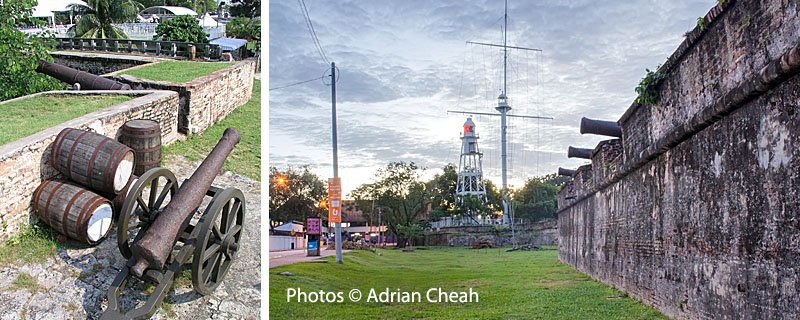
Even though the fort was originally built for the British Royal artillery troops and the military, its function was in administration rather than defense. In its entire history, the fort had never been engaged in any battle. Apart from being used by the British Royal artillery troops, the fort was once occupied by the Sikh Police of the Straits Settlements during the 1920s.
At the northeastern point are the flagstaff and harbour light to signal incoming ships. The flagstaff also communicated with another Bel Retiro on Penang Hill – hence the latter’s official name "Flagstaff Hill" – announcing the arrival of mail ships or important dignitaries which might give rise to the Governor’s descent from his residence at Penang Hill.
Inside this fort, there are numerous cannons and one of them is the infamous Sri Rambai, a brass cannon with an interesting history. The Dutch presented it to the Sultan of Johor in 1606. However, the Portuguese took possession of the cannon and somehow it ended up in Jawana in 1613 and was kept there until 1795 before it was brought to Kuala Selangor. In 1871, the British brought the cannon to Fort Cornwallis.
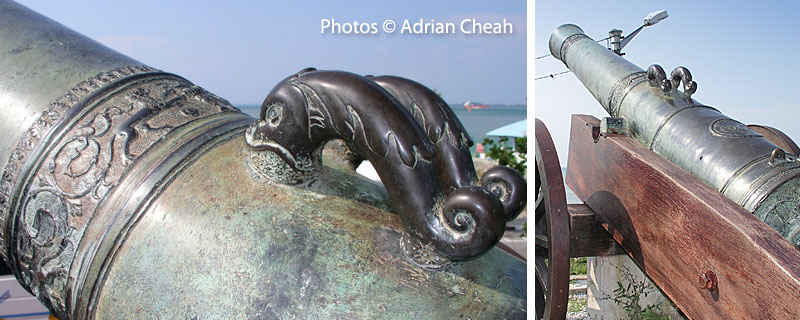
According to the local folk tale, the Sri Rambai cannon possessed magical power. People believed that women who placed flowers on the barrel could improve their fertility.
The fort originally had double walls (outer and inner walls) on all its four sides – north, south, east and west zones. However, the double walls on the west zone were demolished in the early 1970s to make way for the city sewerage and electrical systems. In replacement thereafter, an iron fence was erected along the west zone. During that time too, a modern amphitheater was also built inside the fort in the early 1970s to promote cultural activities. Since then, the fort has become a popular destination among local and foreign tourists.
In 1991, the government privatised the management of Fort Cornwallis in an effort to enhance its position as one of the prime tourist attractions in Penang. Now more than two centuries of age, Fort Cornwallis is probably the only remaining fort built by the British in this part of the world. A series of restoration efforts have been exercised to restore the fort to its original state.
In March 2000, the Malaysian Government through the Department of Museums and Antiquity had granted a total sum of RM1.9 million for the restoration project of Fort Cornwallis. Associate Professor Dr. A Ghafar Ahmad of Universiti Sains Malaysia, School of Architecture, was commissioned as a conservation consultant to head a new team to bring back the fort’s glory of yesteryears and to fortify the walls and structure that held this marvelous architecture together.
Fort Cornwallis with its new ornamental wooden gate and complete with an observation tower at the main entrance looks more impregnable than ever. The bowels of the fort contain a history gallery, a handicraft and souvenir shop, and an open-air amphitheater, where local music and dance festivals are frequently staged.
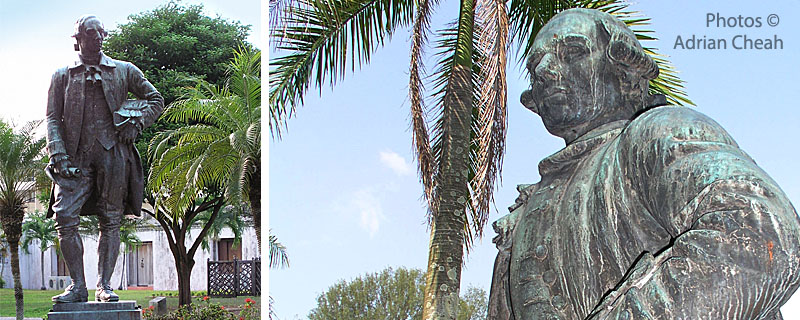
The statue of Francis Light, modeled after his son was relocated from the Penang State Museum to the grounds of Fort Cornwallis. The status now overlooks the fort and it holds a great heritage treasure in the heart of Georgetown.
---------------------------------------------------------
Written and photographed by Adrian Cheah © All rights reserved